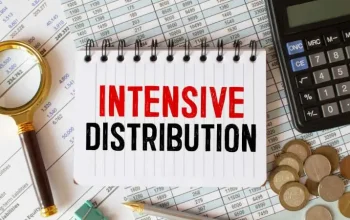2024 is shaping up to be a pivotal year for retail. The IMF forecasts a slowdown in global economic growth throughout the year, which will affect the purchasing power of consumers around the world. It could be a challenging year for retailers across geographies and industries.
But it’s not all pessimism. Beneath the surface, the retail landscape harbours enduring pockets of strength and hidden opportunities that creative operators can capitalize on.
Trends to watch in retail for 2024
Pop-up stores will continue to gain market share
One of late’s most exciting and under-the-radar retail trends is the explosive growth of pop-up stores and retail outlets.
This channel has always been more accessible to micro-retailers than traditional physical stores. Thanks to scalable platforms, emerging costs and barriers to entry are falling.
The great thing about pop-up retail is that you don’t need to reinvent the wheel. If you already have a store, your pop-up presence can complement the concept, not take it in a completely different direction (with all the extra work that entails). It is a play with a high return on investment and added value.
Experiences will take centre stage
This trend is closely related to the pop-up boom. In fact, emerging growth could be said to be a particularly visible subtrend within the broader “experience boom.”
The experiential boom has been around for some time, but it’s taking centre stage as in-person retailers reinvent themselves amid growing competition from e-commerce. Mass sales and clearance “events” (which often exude desperation) are no longer enough to attract buyers. Today, it’s about adding value not only to the shopping experience itself but also to the buyer’s experience; That is, solving your most challenging pain points, ideally before they become really painful.
Supply chains will normalize (with some exceptions)
The supply chain crisis peaked in late 2021 or early 2022, depending on who you ask and which retail subsector we’re talking about. It’s hardly news anymore, but it hasn’t wholly normalized yet.
We can expect such normalization in 2024, with some crucial exceptions in high-growth product categories. From now on, predicts supply chain consultancy GEP, the “winners” of the retail supply chain game, will optimize their own specific logistics needs rather than working to displace competitors in a universally strict environment.
Geotargeting and in-store marketing will finally make their mark
After years of bold conversations about the disruptive potential of geotargeting solutions and app-based marketing in stores, 2024 could finally be a year of action.
AppsFlyer points out eight apps backed by retail and food service giants like Burger King, The Gap, and Pilot Flying J, all with a common purpose: driving opportunistic sales from captive (in-store) users and increasing revenue per customer. With app development costs falling monthly, now is the time for smaller retailers to invest in this potentially revolutionary solution.
Entry barriers to e-commerce will fall
It’s not just app development costs set to collapse in 2024. The barriers to entry into e-commerce have never been lower, and they are likely to fall further as e-commerce tools come into force. Low code or no code enhanced with Artificial Intelligence. This is a unique opportunity for retailers to bolster lagging e-commerce sites or implement entirely new environments.




